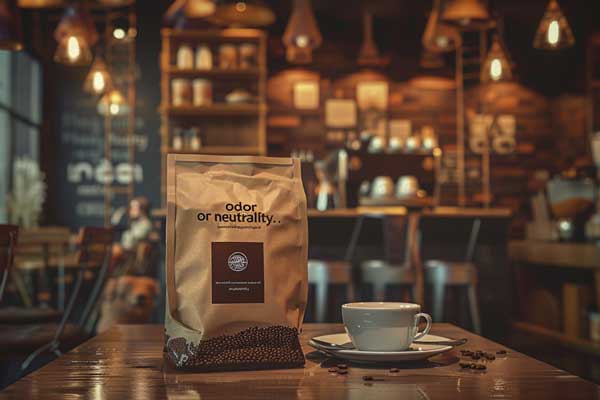In the world of food packaging, adhesives play a key role in keeping containers, wrappers, and other paper-based materials safe and intact. For adhesives to qualify as food-grade, they need to meet strict safety and quality standards that ensure they’re suitable for direct or indirect food contact. In this article, we’ll explore the essential properties of food-grade paper glue and how these features meet the unique demands of the food industry.
Essential Properties of Food-Grade Paper Glue
Non-Toxicity: Ensuring Every Bite is Safe and Clean
Non-toxicity is foundational for any food-grade adhesive. Food-grade glues are formulated without harmful solvents, volatile organic compounds (VOCs), or other toxic chemicals, preventing any risk of contamination.
Imagine a bakery using paper sleeves with adhesive for fresh bread. If that glue contained even trace levels of harmful substances, it could contaminate the food, posing risks for consumer health and brand reputation. Non-toxic adhesives help avoid these risks by meeting stringent safety regulations like FDA’s 21 CFR 175.105 or EFSA guidelines.
- Why It’s Critical: Meeting these health standards not only protects consumers but also reduces risks of recalls and strengthens brand trust. Are your adhesives free from harmful substances that could impact consumer safety?
Odor Neutrality: Keeping Flavors and Aromas Pure
Odor neutrality is essential, as even a faint smell from packaging glue can affect the food’s flavor and aroma, directly impacting consumer experience.
Take a coffee brand that prides itself on rich, natural aromas. An odor-neutral adhesive ensures that nothing interferes with the original scent, preserving the customer experience. For premium items where flavor and aroma are integral, odor-neutral adhesives maintain product purity.
- Real-World Impact: Particularly for delicate products like tea, coffee, or pastries, a glue with no scent keeps flavors intact and enhances consumer satisfaction. Could an odor-neutral adhesive improve how your products are experienced?
Strict Compliance with Food Safety Standards
Food-grade adhesives must comply with safety standards, such as those set by the FDA in the U.S. and EFSA in the EU, which govern chemical compositions and set strict limits on potential contaminants.
Consider a pizza box manufacturer aiming to meet FDA 21 CFR 175.105 standards, ensuring the packaging is safe for hot, indirect food contact. Adhesives used in these boxes must withstand high temperatures without risking contamination.
- Why Compliance Matters: Adhering to these standards protects consumers and helps prevent costly recalls or negative publicity. Certified adhesives provide confidence and reliability in a competitive market. Are your adhesives meeting the latest regulatory standards?
Stability and Non-Reactivity: Withstanding Diverse Food Conditions
Chemical Stability: Consistent Performance Over Time
Food-grade adhesives must remain chemically stable, meaning they won’t break down under temperature changes or humidity, ensuring consistent bonding strength.
Picture a frozen food producer whose packages go from freezer storage to room temperature. If the adhesive breaks down, packaging could fail, exposing food to contamination. Chemically stable adhesives prevent these risks, maintaining strength in varied conditions.
- Why Stability Matters: A stable adhesive offers consistent bonding, even in extreme storage conditions. Could a more stable adhesive help secure your packaging from production to shelf?
Non-Reactivity with Food Components: Handling Oils, Acids, and More
Adhesives in food packaging need to resist reactions with various food components like acids, oils, and salts. Packaging for tomato-based sauces, citrus products, or oily foods demands adhesives that won’t degrade under exposure.
Think of a takeout pizza box. If the glue can’t handle the oils from cheese or acidic sauces, the bond might weaken, causing packaging failures. Non-reactive adhesives prevent these issues, ensuring secure, reliable packaging.
- Why This Matters: A non-reactive adhesive maintains packaging integrity, even when exposed to challenging ingredients, reducing product returns or complaints about leaks. Is your current adhesive up to the task?
Resistance to Moisture and Grease
Many foods naturally release oils or moisture, which can weaken adhesives not formulated to resist these conditions. Packaging for pastries, fried foods, or fresh produce needs an adhesive that can handle moisture exposure to keep packaging intact.
Imagine a fast-food chain using adhesive-sealed boxes for fried items. A grease-resistant adhesive prevents leaks and ensures a positive customer experience.
- Essential Benefits: For packaging exposed to moisture or grease, a high-resistance adhesive keeps products safe and maintains brand quality. How does your adhesive hold up in moist or greasy conditions?
Conclusion: Preparing for the Future with Safe, Sustainable Adhesives
Food-grade adhesives are essential for creating safe, effective food packaging. Key properties like non-toxicity, odor neutrality, regulatory compliance, chemical stability, and non-reactivity ensure these adhesives meet industry demands while protecting consumer safety.
With rising demand for sustainable packaging, the future of food-grade adhesives is moving toward innovations like plant-based and biodegradable options. As companies increasingly adopt eco-friendly practices, now is an ideal time to assess adhesive choices. Choosing safe, sustainable food-grade adhesives allows brands to stand out while meeting market expectations for safety and sustainability.
Consider reviewing your current adhesive solutions today to ensure they align with evolving consumer and regulatory expectations. The right choice can make a lasting difference in how your brand is perceived—and remembered.




